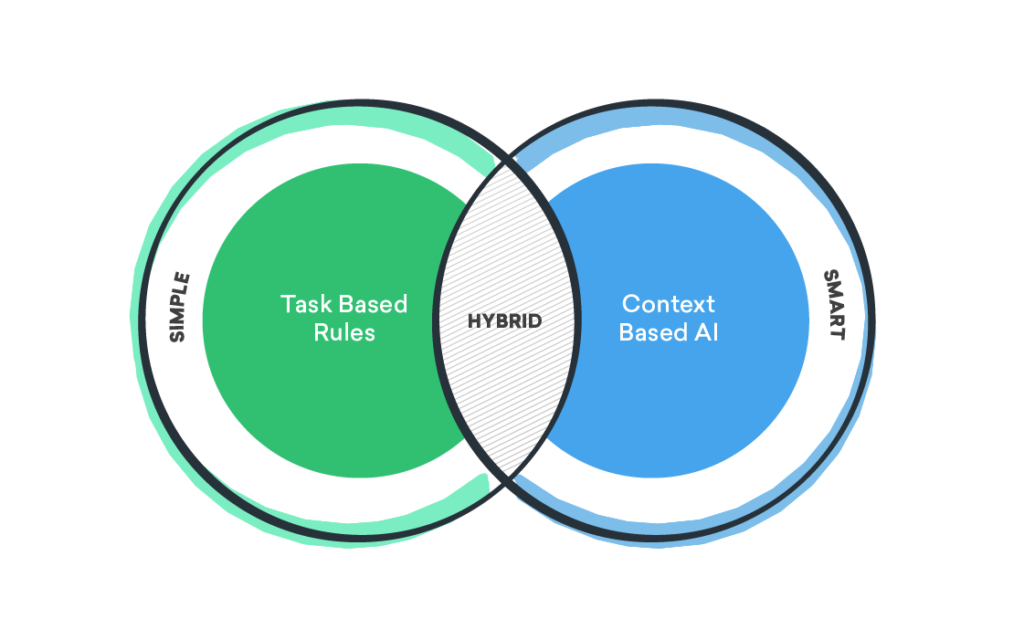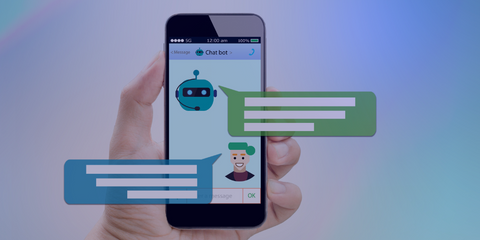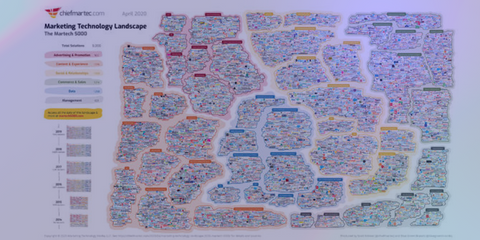When we think of chatbots, some of us picture a little robot to help you with your daily tasks or something out of a sci-fi film. However, our perception of chatbots completely changed in 2016 when the “new” chatbot hype reached its peak. Huge promises were made around what online chatbots would be able to do with new AI capabilities and how it would completely revolutionize the way we handle customer service, sales, and more.
Tech giants made proclamations about how they were the next industry disrupter, and to get ready. A few years later though, we can see that this did not come into fruition, and many see the initial chatbot hype as a failure. However, today there thousands of companies that use chatbots successfully everyday. So, where do chatbots stand now?
Today we want to dive into the chatbot hype, its failures and its triumphs, and give you some helpful information if your brand is looking to integrate chatbots into your customer service strategy.
Today we will cover the following topics to get a better understanding of the rise of chatbots and their use today:
- What are chatbots?
- The initial rise and fall of chatbots
- The success stories
- The major challenges of chatbots
- Chatbots for your brand
Let’s get started.
What are Chatbots?
As we stated before, the idea of a conversation assistant, or chatbot, has been around for decades. Today, though, we are diving into the more recent, technologically advanced version of chatbots that have been seen in technological spaces over the last few years. Before we go any further, we want to clear up any confusion you may have about chatbots. We can define chatbots as:
A software application used to conduct an online chat conversation via text or text-to-speech, in lieu of providing direct contact with a live human agent. A chatbot is a type of software that can automate conversations and interact with people through messaging platforms.
They are used mostly for customer service and assistance. They can streamline the conversation between customers and companies to enhance and simplify the customer experience. By providing a first, instant response, they are able to deliver the fastest and most interactive experience possible with a brand. For support or post-sales teams, they have the ability to handle a large number of customer service requests, and additionally can offer customers purchase links to products, turning chatbots into a sales tool.
A quick recap of benefits chatbots have for companies:
- They can save money
- They can lead to increased sales
- Increased customer interaction
- Help gain a deeper understanding of customers
Additionally, there are benefits for the customer as well, including;
- Instant responses
- Consistency
- 24/7 availability
- Personalization
Ultimately, chatbots offer companies new opportunities to improve the customer experience and overall efficiency, and provide customers with a pleasant, smooth experience.
There are two main types of chatbots we see used today. They are rule-based bots and AI bots.
Rule-based:
Rule-based chatbots are also known as “simple” chatbots, and they are task-specific bots that have a limited range of capabilities, but are simple to implement. Essentially, the bot poses a question based on predetermined options the customer can choose from. They then set them on a sort of track that ideally leads the customer either to a resource to answer their question, or a human agent to continue the process. They are simple to build and train and are best used for simple, straightforward conversations.

AI chatbots:
AI chatbots are more complex, “smarter” versions of rule-based chatbots because of their machine learning capabilities. Machine learning means that the AI chatbot is able to “learn and adapt without following explicit instructions, by using algorithms and statistical models to analyse and draw inferences from patterns in data.” In simpler terms, it means the technology is able to learn by doing, and gets smarter over time to perform better and more precisely.
Chatbots specifically use NLP technology (natural language processing) to understand the question posed by the customer and answer that question without human assistance. Because of these capabilities, they are also known as “smart” chatbots. They are designed to simulate human interactions with customers. They can have free-flowing conversations, understand intent, language, and sentiment. (Source: Freshworks).
While these bots are “smarter” than rule-based ones and have significantly increased functionality, they also require pretty extensive programming to help it understand conversational context. They tend to be more difficult to implement and execute, and they require a lot of data to “learn”.

In addition to these two main types, there arose a need for businesses to have something in between: a rule-based bot that is a bit smarter, or an AI bot that is a bit simpler. This led to the hybrid bot, which meets in the middle to provide a balance between the two, meaning that it can accomplish rule-based tasks while also understanding context and intent.

When it comes to deciding between the two, there is no overall right or wrong answer. They are simply different and are best built for different use cases. As stated, rule-based chatbots are much cheaper and easier to implement and are great for simple queries, while AI chatbots are great for more complex customer service issues and interactions, and therefore are more expensive and complicated to implement. In addition, the options of a hybrid bot may be best suited for you!
Each organization is different, as are their needs. We will dive into some of the questions you can ask when it comes time to decide on your needs later in this article.
The Initial Rise and Fall of Chatbots
Chatbots received a makeover in recent years and were presented to be a type of “disruptive revolution” for technology as we knew it. All of a sudden, it seemed that everyone was convinced that chatbots were the future and would become commonplace in our daily lives. In fact, in 2016, Gartner proclaimed that “the average person will have more conversations with bots than with their spouse” (Source: CB Insights)
2016 was the peak of the enormous hype behind the concept of chatbots under the promise of revolutionizing the way we do customer service, sales, and more. That year, an overwhelming amount of tech giants were announcing competing chatbot projects including Microsoft and Facebook. Everyone seemed to be on board and were looking forward to this new future. A survey by Oracle done around that time showed that 80% of businesses planned to use chatbots by 2020. A few years later, we can see that this did not pan out, and that there were significant failures that followed.
These big promises coupled with huge amounts of money being invested lead to a phenomenal hype and excitement about the potential of chatbots., which in the end, did not deliver.
Within a couple years, many looked at the chatbot revolution as a resounding failure. Consumers found that many of their experiences with chatbots in this time were actually more complicated and time-consuming. Not only for customers, but for companies too, because the chatbots often needed human assistance to understand questions and commands.
In many cases, the chatbots were unable to understand the language customers were using and were not equipped with the ability to process the amount of data needed to fulfill the complex requests that were expected, and promised, from them.
The lack of follow-through led to a significant decrease in interest and usage of chatbots. Most notably was the closure of Facebook’s bot M, which was shut down in 2018. Additionally, Microsoft’s Tay was shut down before it even really started.
So, why did it fail? Some say that one of the root causes was the lack of AI capabilities, meaning that they were less capable and “smart” than originally thought. In addition, many companies presented their chatbots as a singular, standalone solution rather than an integration into a larger strategy. We see now that as a standalone service option, bots were not powerful or smart enough to take on this level of responsibility.
The inability to live up to the expectations and the initial growing pains led to a general feeling that chatbots were not worth the attention and disruption they were given.
Success Stories
However, there have been many success stories and lasting use cases for chatbots. If you ever spend time on websites specializing in B2B, chances are you are pretty familiar with chatbots. After the initial trials and errors, chatbots have found their niche within greater customer service strategies and operations.
They help support customer service teams, run by real people, by reducing the need to answer repetitive and simple questions, are available 24/7 when real people are not, and create a more interactive experience for website visitors. As a part of the entire customer service strategy, chatbots seem to have found their place.
As part of a wider chat offering, chatbots thrive. All they need is a little bit of human support.
WhosOn
In addition to customer service, chatbots have great use cases for sales and marketing teams as well including:
- Lead generation: The dialogue that can be started from the moment a lead reaches your page, website, app, etc, can create a positive customer experience and turn leads into customers.
- Lead nurturing: Bots can help you nurture your leads and foster positive customer relationships by giving personalized recommendations, offer discounts where appropriate, and send any relevant information needed.
- Customer engagement: Not only do bots operate 24/7 so customers can engage with companies whenever they choose, they also respond almost immediately and are scalable so no busy hours get in the way of a customer looking for help.
- Product search and recommendations: Certain bots can track interests, buying history, and preferences to offer personalized product recommendations and options. They can also help narrow down product searches.
There are also opportunities for social media, human resources, personal services, and more. Even after the initial rise and fall, it seems that chatbots are here to stay. In 2019, it was reported that the global chatbot market is anticipated to reach $9.4 Billion by 2024!
While chatbots’ failure to live up to the hype may have been disappointing for early adopters, it’s now clearer than ever where chatbot technology can be useful.
CB Insights
We can see many successes in the following areas:
- Finance Technology
- Healthcare
- Sales and CRM
- E-Commerce and Retail
- Education
- Law + Government
We can also note that with the context of Covid-19, we can see that chatbots have come back into the spotlight as an asset for customer service. In fact over 70% of IT decision-makers from multiple sectors say that chatbots have helped their organizations “remain agile during Covid-19.” More than a third plan to increase investment in chatbots as a result of the pandemic. (Source: CB Insights)
Four Major Challenges
From the ups and downs, we have concluded that there are four major challenges that chatbots face:
- The management and understanding of several different languages
- The intelligent, personalized, and perpetually improving processing of user questions and requests based upon the user’s conversation history, past purchases, location, and context of their request. The bots must be continuously learning and improving.
- They need to be able to monitor new conversations and quickly connect the user to a human agent on demand to continue the conversation.
- They must be integrated with other company platforms such as the CRM in order to provide accurate customer data.
It is necessary for modern bots to address these issues to continue to grow, but we can see in many cases where they have successfully overcome them.
Chatbots for Your Brand
If your brand is looking into potentially implementing a chatbot solution, that’s great! There are many practical use cases that can help you save time and money while keeping your customers happy with the use of chatbots.
At Saas Advisor, we have seen the successful implementation of a chatbot solution of our clients. There are 5 key takeaways that we have learned and want to share with you today to help guide you in the selection and integration process:
- What is the main mission of the chatbot? What service(s) are provided to users?
- Which application will the chatbot be used in? (Website, mobile app, Whatsapp, Facebook…)
- Which teams will use the chatbot on a daily basis and eventually take over when a human agent is needed?
- Which teams will analyze the results?
- Which management systems will be integrated with the chatbot? (CRM, advertising platform, etc.)
Once you have answered these questions, you will have a clearer picture of what your chatbot strategy can look like, and what your best options may be. If you have any further questions or are looking for assistance to implement your chatbot, we are available to help!
Want to keep reading? Check out our latest article on influencer marketing!





